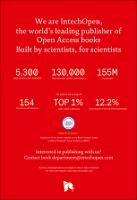Chapter Potentials and Challenges of Additive Manufacturing Technologies for Heat Exchanger
Author(s)
Scheithauer, Uwe
Kordaß, Richard
Noack, Kevin
F. Eichenauer, Martin
Hartmann, Mathias
Abel, Johannes
Ganzer, Gregor
Lordick, Daniel
Language
EnglishAbstract
The rapid development of additive manufacturing (AM) technologies enables a radical paradigm shift in the construction of heat exchangers. In place of a layout limited to the use of planar or tubular starting materials, heat exchangers can now be optimized, reflecting their function and application in a particular environment. The complexity of form is no longer a restriction but a quality. Instead of brazing elements, resulting in rather inflexible standard components prone to leakages, with AM, we finally can create seamless integrated and custom solutions from monolithic material. To address AM for heat exchangers we both focus on the processes, materials, and connections as well as on the construction abilities within certain modeling and simulation tools. AM is not the total loss of restrictions. Depending on the processes used, delicate constraints have to be considered. But on the other hand, we can access materials, which can operate in a much wider heat range. It is evident that conventional modeling techniques cannot match the requirements of a flexible and adaptive form finding. Instead, we exploit biomimetic and mathematical approaches with parametric modeling. This results in unseen configurations and pushes the limits of how we should think about heat exchangers today.
Keywords
additive manufacturing, computer-aided design, flow simulation, metals, ceramics, fractal geometryDOI
10.5772/intechopen.80010Publisher
InTechOpenPublisher website
https://www.intechopen.com/Publication date and place
2019Classification
Engineering: general


 Download
Download